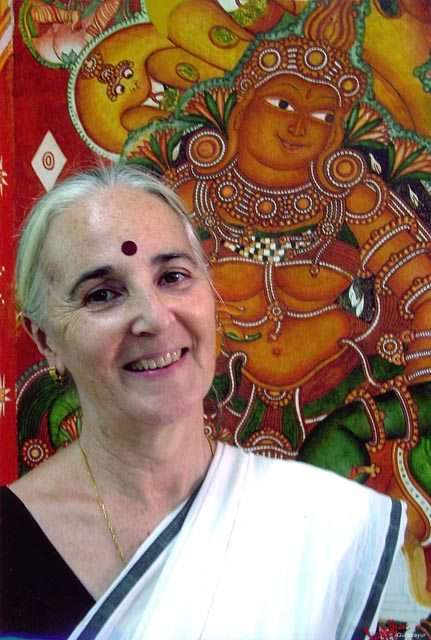The curiosity and nervousness about jobs after college arrived with the routine frenzy of course registration and finals. As a math and economics student, could I compromise a posh corporate salary for a creative Masters degree or the idealism of public service? My parents urged me to be sensible: think of the independence you’ll have after working, earning and saving for a few years, they said. Do what we want first, it sounded like, and then what you want. I didn’t necessarily want to follow their example, but I didn’t know how to be original, either. Halfway through my third year at Columbia University, I believed my future lay muddled in the grid of New York City. Maybe I could work at the World Bank. Perhaps an economic think tank. Do the Peace Corps and then continue at the UN? I hadn’t yet found my coordinates.
Queens-bound for the first time some days later, I looked forward to pedestrian anonymity and the absence of a campus (and its career center). Venturing into the strange borough, my arrival was briskly anointed by sunlit graffiti and expressionless faces on the subway stairs. Signs advertised buses and subway superintendents, orienting me in the city’s tirelessly tired manner: Welcome to Queens. Now, please get out of the way. The cold wind funneling down the stairs shocked me into a sense of urgency, suddenly making me impatient as I joined the pile of people that bus stops create.
“Are you from India?” An Indian man my father’s age had interrupted my reverie. It was an oft-used innocent conversation starter, ice breaker and patriotic nod amongst Indians; I found that I didn’t dismiss him as summarily as I did most strangers in the city.
“Yes, I am. I’m actually looking for the Ganesh temple; do I take this bus?”
“Ah, I’m headed in that direction. I can show you the way. But don’t be mistaken – I’m not your guru.” His joke – was it a joke? – about not being my guru, my teacher or spiritual guide, caught me off-guard. I tried to humor him, thinking it would end the conversation. Far from it.
“Um, thanks. I suppose I’ll find my guru eventually.” I shifted my eyes to the bus pulling up to the curb.
“Actually, your guru will find you.” He climbed into the bus, gesturing for me to follow. I obliged in silence, hoping that quiet would preside over the rest of our time together. Again, I was mistaken.
This stranger, my neighbor, launched into a soliloquy about the many, and hidden, talents of a guru, and how effectively one could size up his students before guiding them to them their true paths, their destinies. He quoted the Bhagavad Gita, an ancient, practical, heavily-thumbed spiritual and ethical Hindu text, and praised its principal characters: Arjuna, a heroic prince at war; and Krishna, God descended to earth to restore peace to a troubled land and serve as Arjuna’s guru. Krishna, he said, volunteered to be Arjuna’s charioteer knowing full well that Arjuna would succumb to preemptive guilt and doubt about the war he was to start. At that crucial point, Krishna would redeem Arjuna and remind him of his duty, as only a guru could. I listened in silence – I hadn’t promised him a conversation – and nodded occasionally. The bus turned, and so did the man’s thoughts.
“What do you study?” I was startled by the question, so stereotypical of Indians, but so incongruous in context.
“Applied Math.” I didn’t bother with the other half of my degree; my education bore no relevance to his ministerial monologue.
“Mathematics, very good. And what do you want to do after you finish school?”
I hesitated. Was it worth telling this man that I was torn between the sensible and the spontaneous? I limited my answer to a breezy “oh, I’m not sure,” wary of his next speech about India’s plethora of mathematicians and engineers, so I limited my answer. For a third time that morning, I was wrong.
“You want to work at the World Bank, perhaps?” He fixed his eyes on mine, his head nodding slightly with the jostling bus, and I responded with a speechless stare.
“The World Bank? How on earth did you know that I’ve been thinking about exactly that for some time now? I never once mentioned the World Bank, or my Economics minor, in this conversation!”
My voice was raised and my words tumbled out, but he was not flustered. He smiled, completely in control.
“How can you not tell, by now, that I know who you are? That I can see through you, but I choose not to?”
This time I was silent simply because I did not know how to react. We swayed with the bus, as it pulled up to the curb.
“Ah, this is our stop. You need to go down this block and turn right, and you’ll get to the temple. Good luck with the rest of your life. So long!”
I mechanically thanked the bus driver and waved at the man. He was headed in the opposite direction, and I watched the distance between our backs increase. The irony of strangers in New York, I realized, is that while you may choose not to see them, they may have seen through you all along – and may also see you through, as only a guru can.

